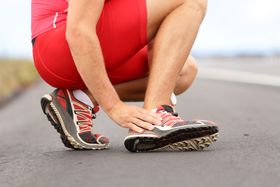Upstep Answers
Our team answers your questions about the causes and treatment of various podiatric conditions, including plantar fasciitis, flat feet, foot pain, and the use of custom orthotics.
Recent Answers
Best Shoes For a Sprained Ankle—and What to Avoid
Discover the ultimate footwear for a sprained ankle and learn which styles to steer clear of to prevent further injury and promote healing.
Asked 9 months ago
Can a Vitamin B12 Deficiency Cause Plantar Fasciitis?
Struggling with plantar fasciitis? Discover if a vitamin B12 deficiency could be the culprit and learn how to alleviate your pain.
Asked 10 months ago
Metatarsalgia vs Morton’s Neuroma: How to Tell the Difference
Though a common occurrence, pain in the ball of the foot is still a nuisance, especially when the cause is unknown. Two of the most common causes of pain in the ball of the foot are metatarsalgia and
Asked 10 months ago
Why Arch Supports Hurt Flat Feet and How to Relieve the Pain
Flat feet causing pain? Discover why arch supports might be the problem, not the solution. Learn how to find the right support for happy feet.
Asked 10 months ago
The Differences Between Memory Foam vs. Gel Insoles
Beyond comfort: Understanding the benefits and drawbacks of memory foam and gel insoles
Asked 10 months ago
Related Articles

Conservative and Invasive Treatments for Flat Feet
Janik Sundstrom
December 17, 2024

Do You Have Hypothyroidism From Your Burning Feet?
Janik Sundstrom
December 19, 2024

Best Cycling Shoe Insoles to Provide Arch Support
Janik Sundstrom
May 14, 2025

Overcoming Foot Fractures: Returning to Exercise Safely
Babafemi Adebajo
April 4, 2023

Best Insoles for Claw Toe
Babafemi Adebajo
May 14, 2025
Recent Posts
Babafemi Adebajo
5 Best Orthotics to Aid With Your Lower Back Pain
Babafemi Adebajo
6 Best Cycling Shoe Insoles for Plantar Fasciitis
Babafemi Adebajo



